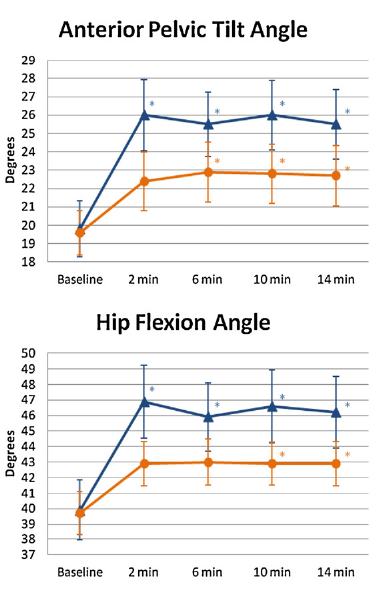A new patient from earlier this week has prompted this blog. He is a 43 year old presenting with persistent hamstring pain during running. The pain had not responded to other treatment over the past few months including stretching, massage and dry needling. When talking to him, there was clear frustration, especially considering the patient had been running for more than 20 years, and never had any long term injuries or any hamstring pain. Following assessment, a diagnosis of a proximal hamstring tendinopathy was made, an injury we commonly see at the clinic.
On assessment, the patients hamstrings were weak, hip flexors very tight, and gluteal muscle function very poor. When videoing his running, he had a mild over-stride and excessive anterior pelvic tilt. All of these factors are common with hamstring injuries.
After explaining to the patient the rehabilitation plan required to get back to running 60 km per week which he loved, he had one question for me:
Why after more than 20 years, has the problem only just developed?
As with most injuries, they are usually the result of change – new shoes, rapid increase to training load, different terrain, introduction of hills, and the list goes on. The human body is adaptable to change, but not to rapid change. Interestingly, in this patients case, all of the aforementioned variables had remained pretty consistent. If anything, his running volume had reduced. However, there was one significant change made in the previous summer. The patient had decided to take up triathlons for the first time in more than 15 years. Considering his pain was not increased by cycling or swimming, how could this have affected things? The answer can be found a recent study published by Rendos et al. (2013) in the Journal of Medicine and Science in Sport.

Blue = inexperienced triathlete (< 2 years)
Orange = experienced triathlete (> 2 years)
What you will see in the graphs to the right is that following 30 minutes of cycling, a runners anterior pelvic tilt and hip flexion at foot strike is likely to increase. These factors increase the stress on the hamstrings. So the key change for this patient was starting cycling and completing a number of runs straight off the bike. Importantly, the study shows these changes and associated risks seem to be greatest in an inexperienced triathlete.
I doubt very much my patient would have developed a hamstring injury without taking up triathlons. It is very likely the running mechanics I witnessed when assessing him were very different to those he would have possessed a year ago. Unfortunately, these mechanics have been left unchecked for a number of months now and as a result we now have a number of additional issues to deal with, including:
– Hip flexor muscle tightness
– Impaired gluteal function
– Hamstring weakness
With some hard work to address these issues, along with a focus on running technique to reduce anterior pelvic tilt and hip flexion at foot strike, I am confident of a good outcome. However, the combination of this case and the mentioned research provides us all with some important lessons:
1. Just because cycling doesn’t cause pain in an injured runner, doesn’t mean it isn’t part of the problem
2. Cycling is likely to alter running mechanics in triathletes, and increase stress on the hamstring musculature, particularly in inexperienced triathletes
3. Addressing changes to running mechanics as a result cycling is possible through focus on technique, appropriate exercise and consideration to manual therapy to improve pelvic/hip movement and control – better to do this sooner rather than later

